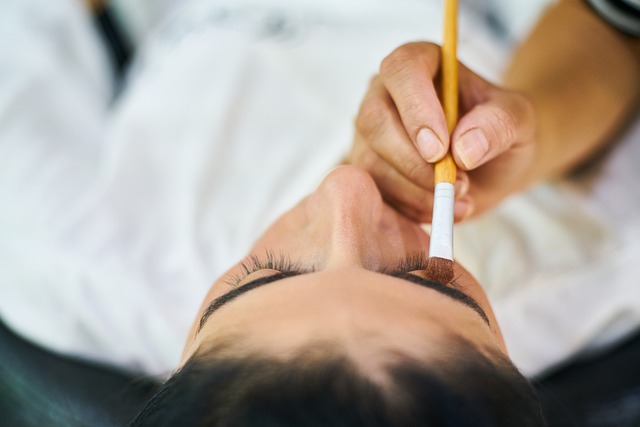London residents frequently encounter skin tags, also known as acrochordons, a common benign skin growth. These are often found in areas experiencing consistent friction such as under bra straps or around the waist, and can be influenced by various factors including lifestyle habits, hormonal changes, obesity, diabetes, and conditions like acanthosis nigricans. For residents seeking removal, London Skin Tag Removal clinics offer safe and effective treatments tailored to individual needs, utilizing methods such as cryotherapy, electrocoagulation, surgical excision, and laser treatment. It's crucial to consult with healthcare professionals before removal to ensure the most appropriate treatment based on size, location, and quantity of skin tags. With a wide array of modern solutions available and specialized clinics across the city, Londoners have convenient access to expert care for skin tag removal, helping to restore confidence and maintain clear skin. Understanding the factors that contribute to skin tag development is key for managing their impact within London's diverse population. The medical community in London provides comprehensive guidance on both prevention and treatment of this common condition.
Skin tags, those benign and often harmless growths, are a common dermatological occurrence among residents of London. This article delves into the myriad factors contributing to their prevalence within the city’s diverse population. From lifestyle choices to environmental influences, we explore the common causes behind skin tag formation and offer insights from medical experts on managing and preventing these skin phenomena, particularly with the context of London Skin Tag Removal options available. Join us as we unravel the intricacies surrounding this dermatological phenomenon in the bustling urban setting of London.
- Understanding Skin Tags: A Guide for Residents of London
- Common Causes Behind the Appearance of Skin Tags in Londoners
- The Role of Lifestyle Factors in Skin Tag Formation Among London's Population
- Medical Perspectives: Expert Insights on Skin Tag Development and Prevention in London
Understanding Skin Tags: A Guide for Residents of London

Understanding skin tags is crucial for residents of London, a city where dermatological concerns can be as varied as its population. These benign growths, also known as acrochordons, are common and typically harmless. They often appear as small, hanging pieces of flesh that are connected to the skin by a stalk. While the exact cause of skin tags is not fully understood, they are associated with factors such as friction, rubbing, and body dynamics, which can be prevalent in the dynamic environment of London. The city’s diverse population may experience skin tags for different reasons, ranging from shaving or clothing irritation to hormonal changes and certain skin conditions like obesity, diabetes, and acanthosis nigricans.
For those seeking removal, London Skin Tag Removal clinics offer a variety of safe and effective treatments, including cryotherapy, electrocoagulation, and surgical excision. It’s important to consult with a healthcare professional before opting for any removal method, as they can provide personalized advice based on the size, location, and number of skin tags present. With advancements in medical technology, non-invasive options such as laser treatment are also available, ensuring that residents of London have access to the most suitable and modern solutions for their dermatological needs. Whether you’re dealing with a single tag or multiple growths, professional guidance will help navigate the best path forward for your skin health in the vibrant city of London.
Common Causes Behind the Appearance of Skin Tags in Londoners

London’s diverse population and varied environmental factors contribute to the prevalence of skin tags, a common benign skin growth. These tiny flaps of skin can appear almost anywhere on the body and are often associated with friction or rubbing against clothing, skin, or prosthetic devices. In the context of Londoners, factors such as frequent changes in temperature and humidity may play a role in their development. The city’s high population density and varied lifestyle choices also influence the frequency of skin tags, with individuals leading sedentary lifestyles being more prone to their occurrence. Dietary habits that include high sugar intake can exacerbate the condition, as can being overweight or obese, which is increasingly common in urban settings like London. Additionally, skin tags are often found in areas of the body exposed to consistent pressure or friction, such as under bra straps, around the waistline, and on the neck, where clothing may rub against the skin.
Seeking professional London Skin Tag Removal services is a popular option for residents looking to address these growths. Advanced removal methods, including cryotherapy, electrocoagulation, and surgical excision, are available, providing safe and effective solutions tailored to individual needs. The choice of removal method depends on factors such as the size, location, and number of skin tags, with each procedure ensuring minimal discomfort and optimal results. With the availability of specialized clinics throughout London, individuals can readily access expert care and guidance for the treatment of skin tags, helping to restore confidence and maintain a clear complexion.
The Role of Lifestyle Factors in Skin Tag Formation Among London's Population

In London, a diverse metropolis with a variety of lifestyles, skin tag formation is influenced by a multitude of factors. Lifestyle choices play a significant role in the prevalence and development of these benign growths. Obesity, often linked to sedentary habits and poor dietary patterns prevalent among certain demographics within London’s population, has been associated with an increased risk of skin tags. Consistently high body mass index (BMI) can create a microenvironment conducive to the formation of these lesions, particularly in areas where skin rubs against skin or clothing, such as underarms, groin, and neck.
Furthermore, environmental factors specific to London’s urban environment, including pollution and varying weather conditions, may also contribute to skin tag occurrence. The stress caused by long-term exposure to pollutants can affect the body’s hormone balance, potentially leading to skin tag growth. Additionally, habitual exposure to sun or UV radiation without adequate protection can trigger the human papillomavirus (HPV), which is implicated in the development of skin tags. In light of these influences, seeking professional London Skin Tag Removal services becomes crucial for those affected by these benign growths. These specialized treatments not only address the aesthetic concerns but also ensure the health and safety of the patient’s skin. Understanding the interplay between lifestyle factors and skin tag formation is key to managing their appearance and maintaining overall skin health in London’s diverse population.
Medical Perspectives: Expert Insights on Skin Tag Development and Prevention in London

In London, the medical community has a comprehensive understanding of skin tag development and prevention, with leading dermatologists providing expert insights into this common benign skin growth. Skin tags, also known as acrochorda, are soft, benign skin growths that resemble a peduncle attached to the surface of the skin by a connecting stalk. They typically occur in areas where there’s constant friction or rubbing, such as the underarms, neck, and groin. The exact cause of skin tags remains somewhat elusive; however, they are associated with factors like hormonal changes, obesity, insulin resistance, aging, and genetic predisposition. In London, the prevalence of skin tags is addressed through both preventative measures and advanced removal methods, with ‘London Skin Tag Removal’ being a sought-after service in the city. Dermatologists employ various techniques for removal, including liquid nitrogen freezing, surgical snip excision, electrocoagulation, and laser treatments, ensuring minimal scarring and quick recovery times. Prevention strategies often involve maintaining a healthy weight, regular physical activity, and careful skin monitoring to identify any new or changing growths early on. With the diverse population of London, understanding the cultural and lifestyle factors that contribute to skin tag development is crucial for tailored patient care and effective management of these common skin lesions.
Londoners often encounter skin tags, benign skin growths that can appear for a variety of reasons. This article has delved into the common causes behind their formation, emphasizing lifestyle factors such as weight changes, friction, and aging as significant contributors. Experts weigh in, highlighting the importance of understanding these elements to manage and prevent skin tag development effectively. For those in London seeking effective solutions, London Skin Tag Removal services offer safe and efficient methods to address this common concern. By recognizing the underlying causes and consulting with professionals, residents can maintain clear, healthy skin and enhance their overall well-being.
